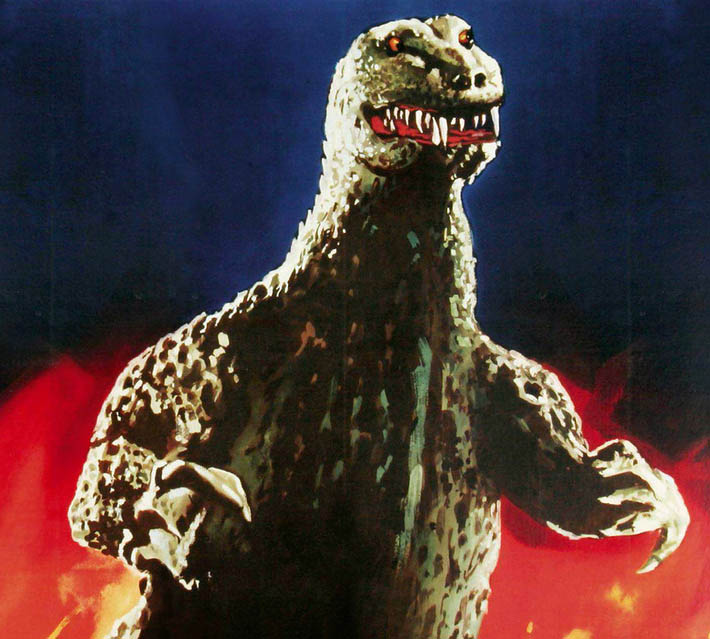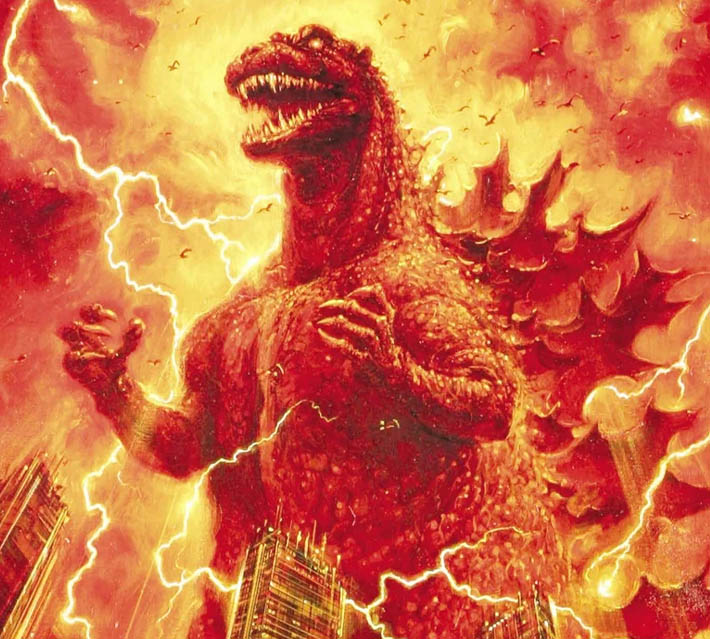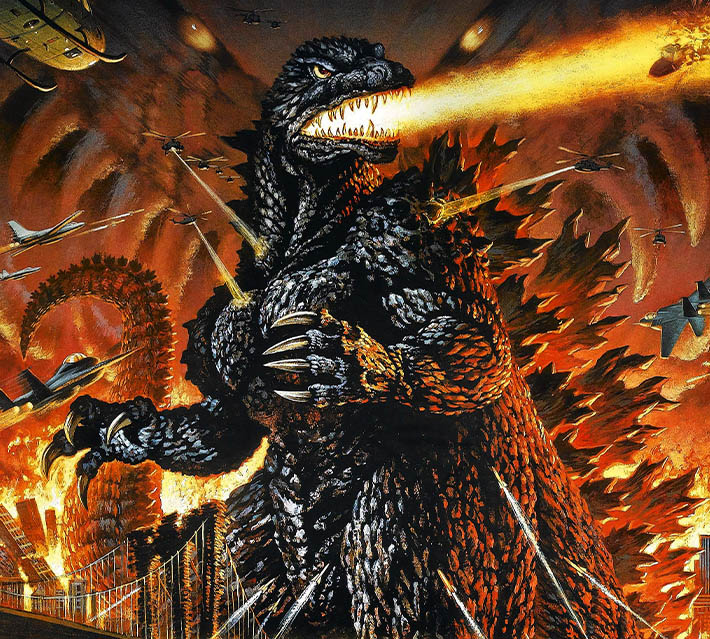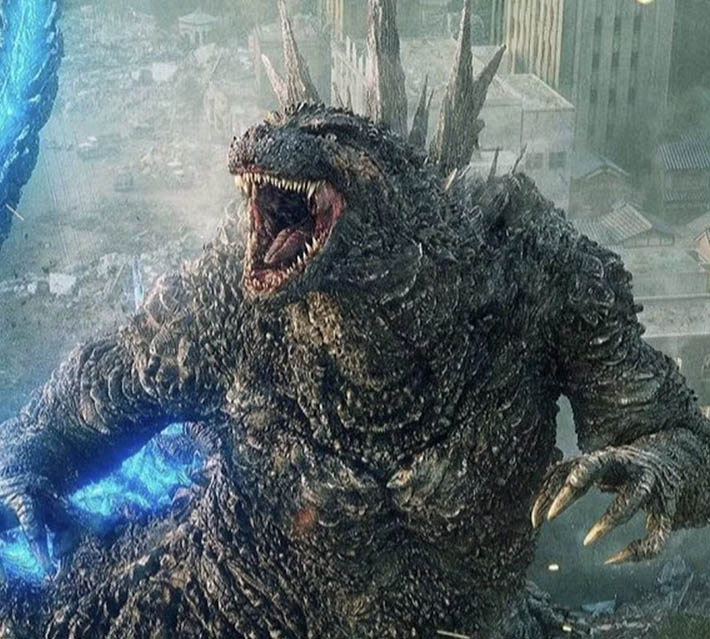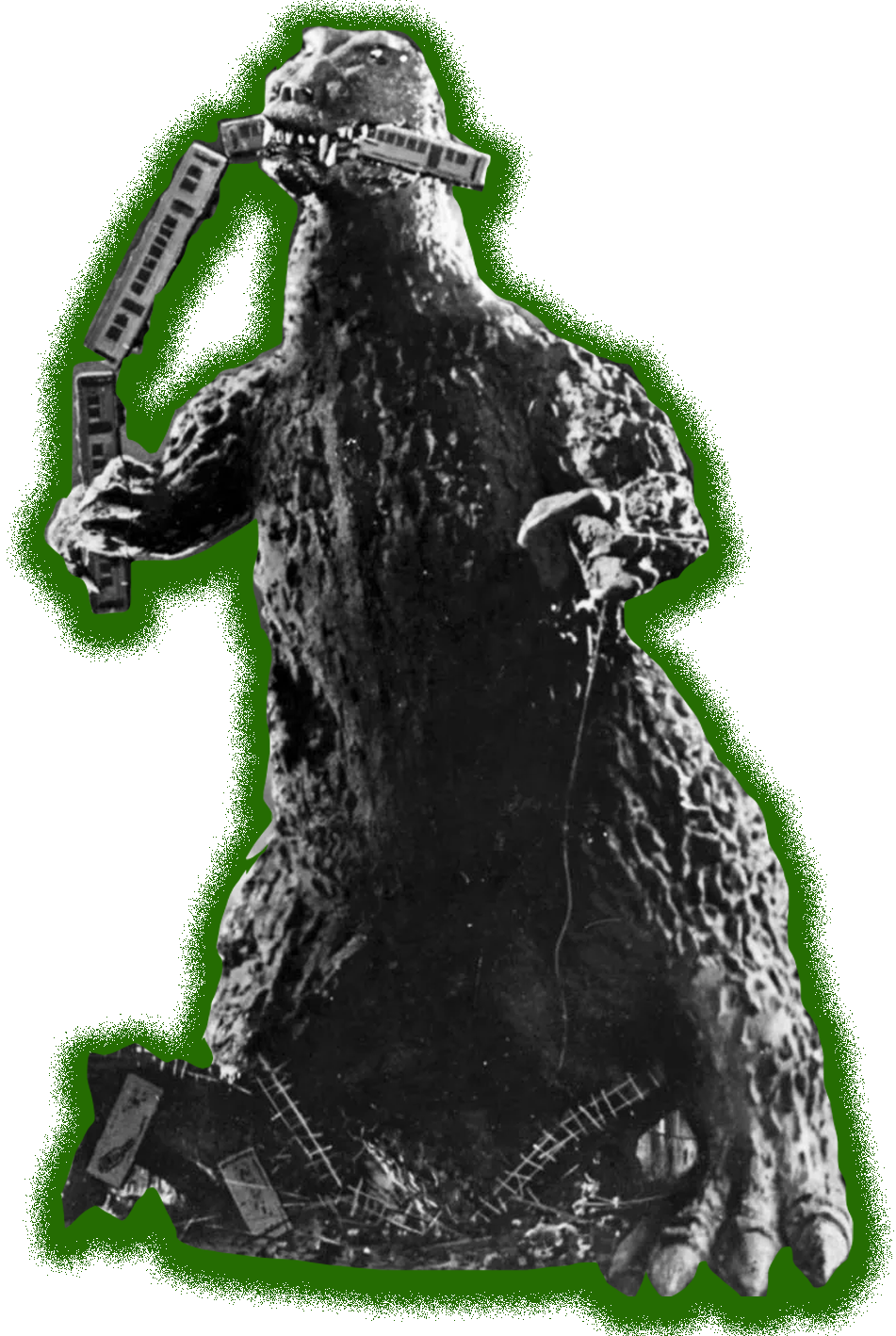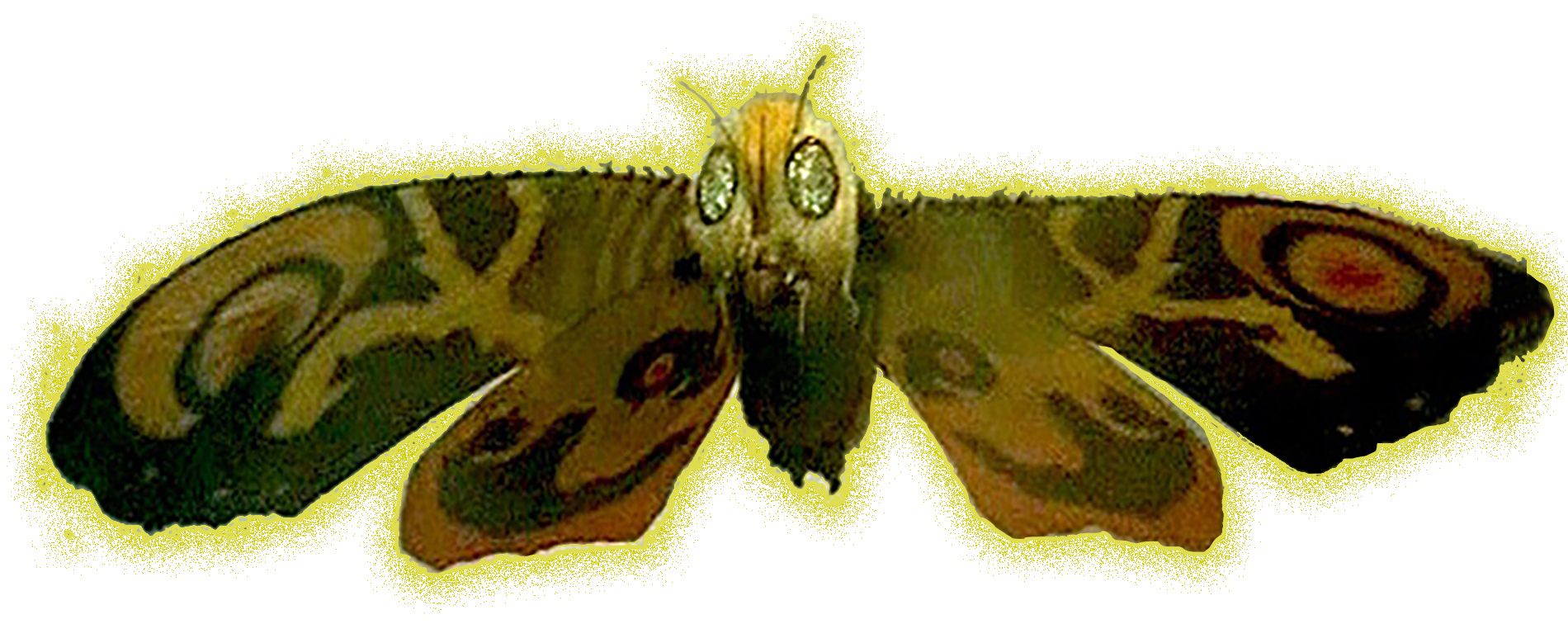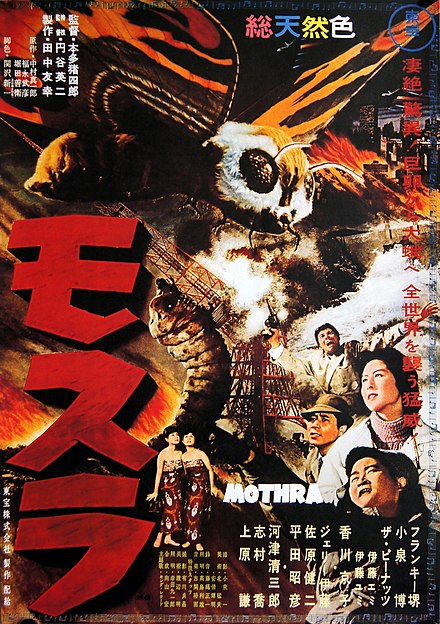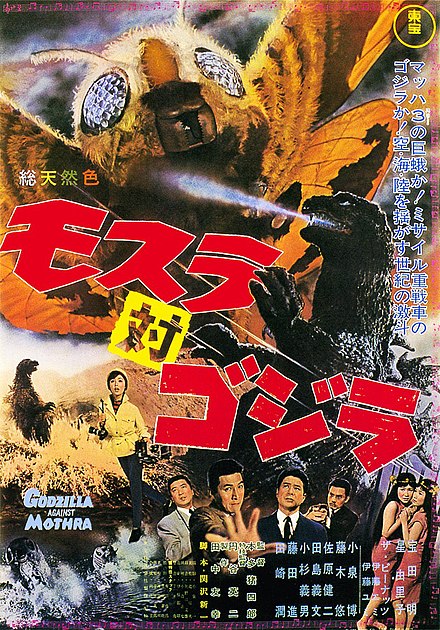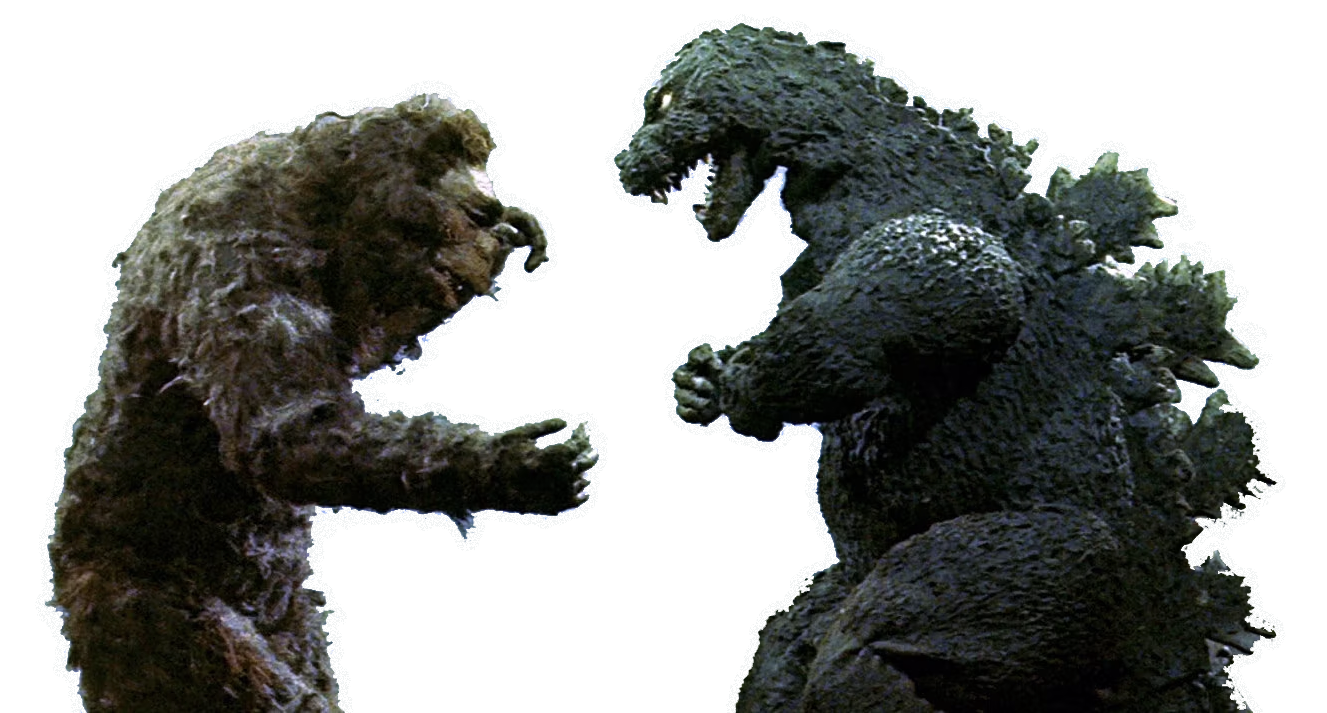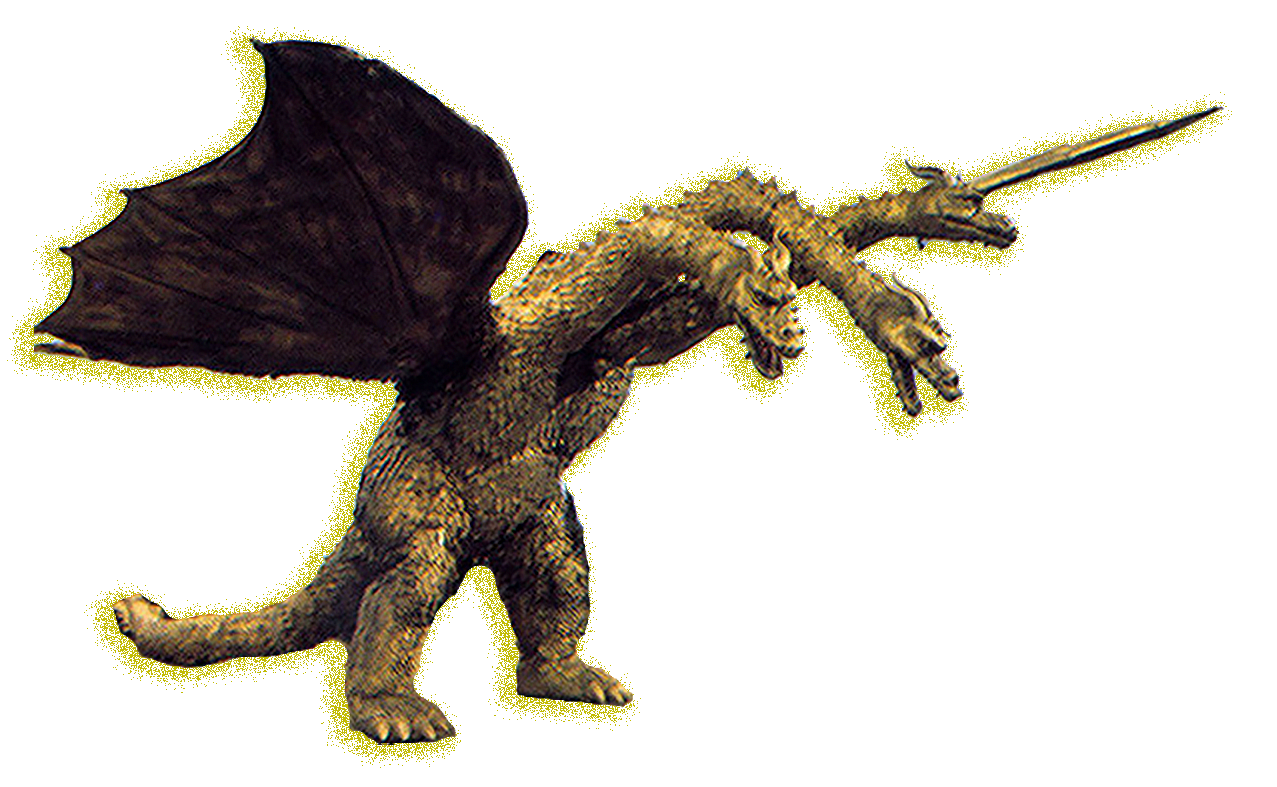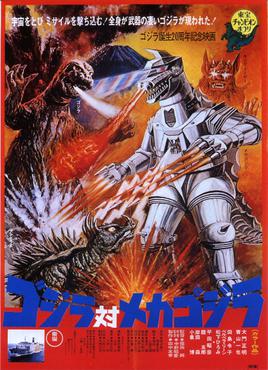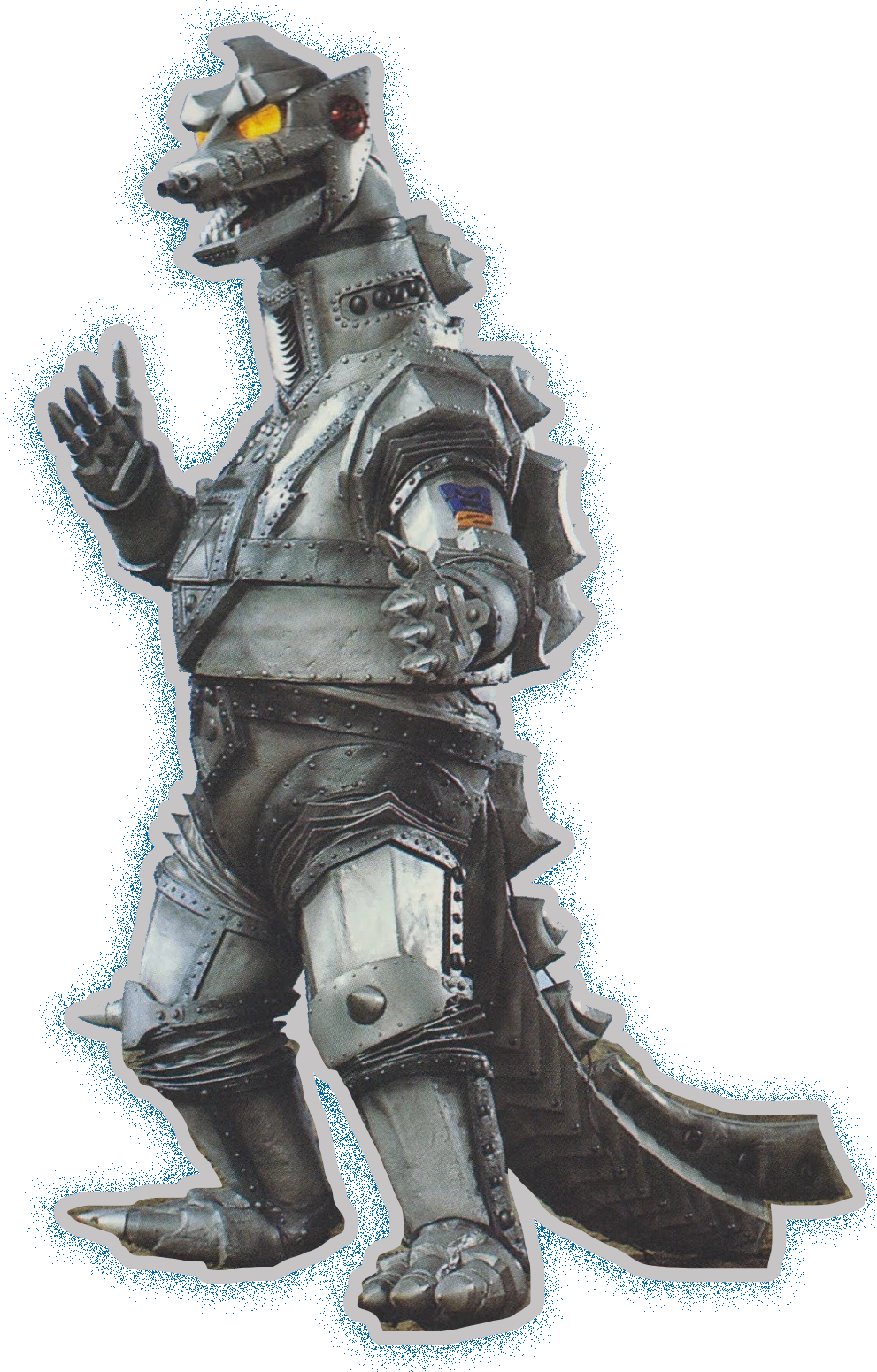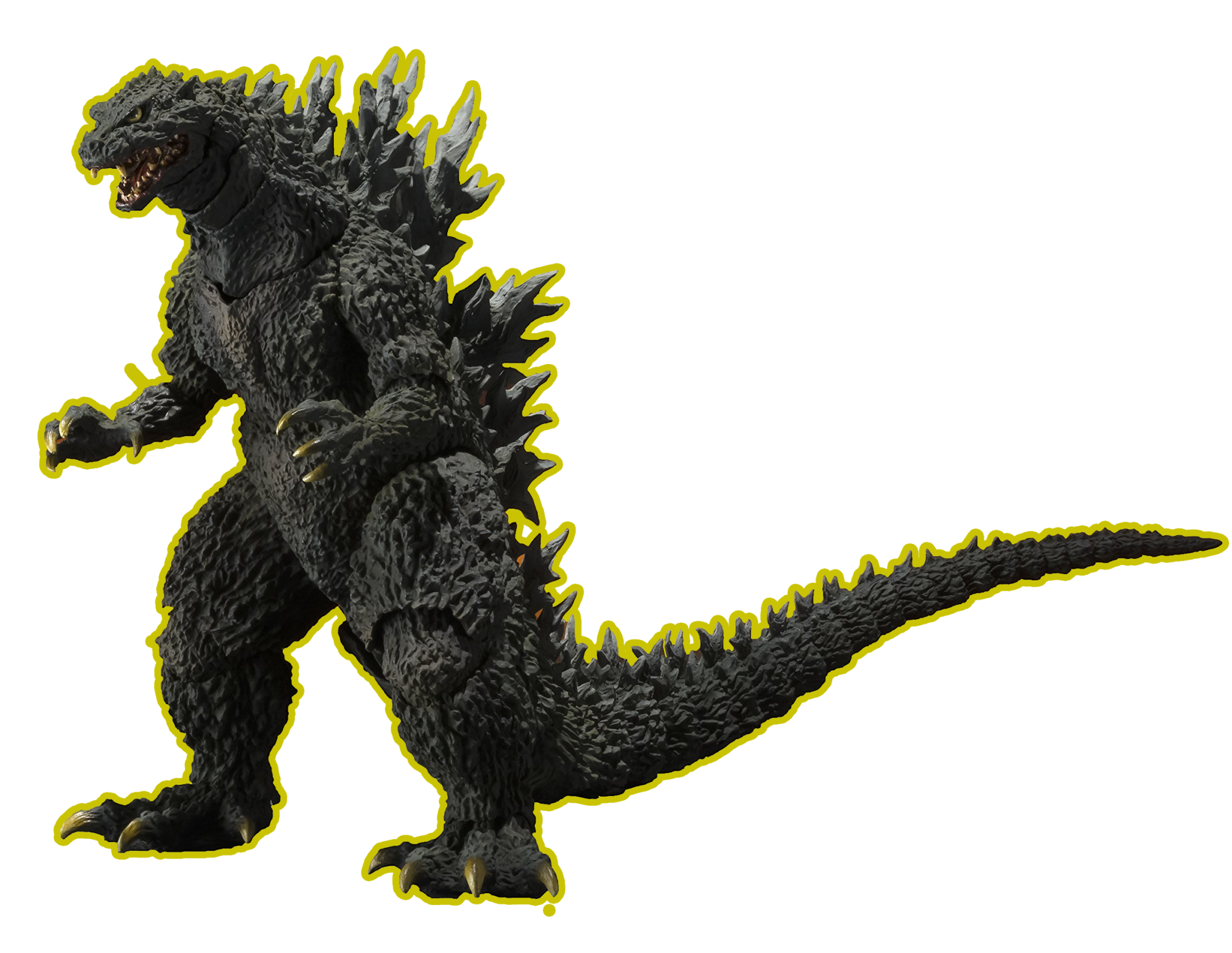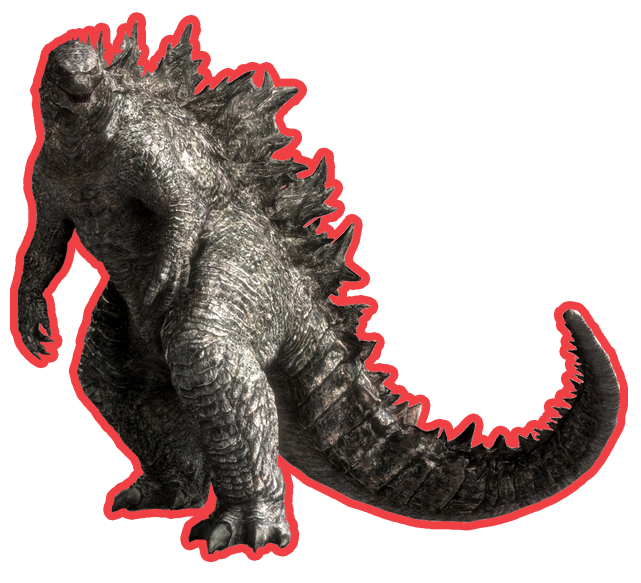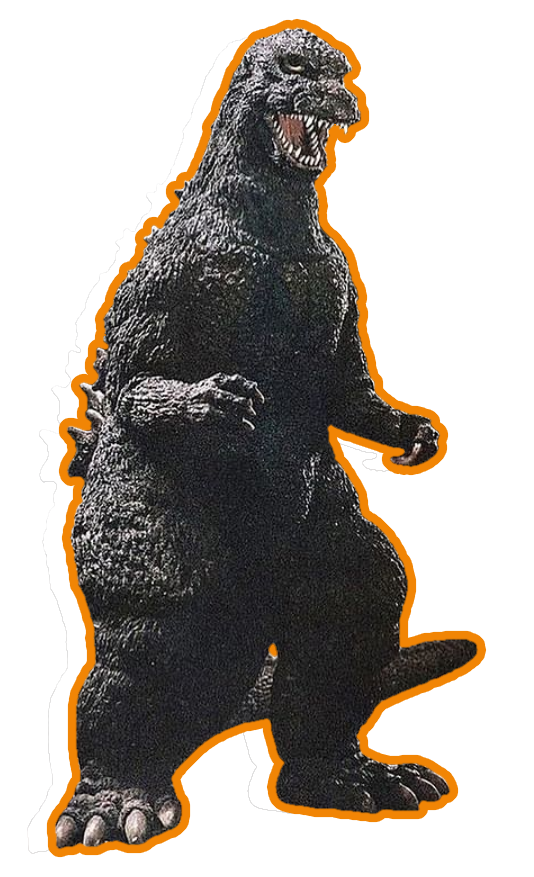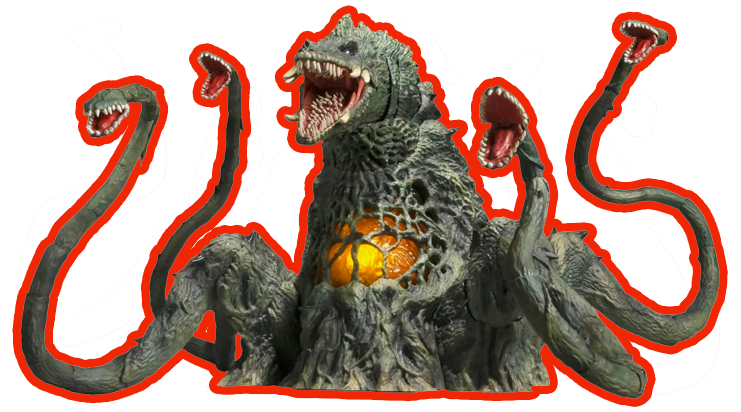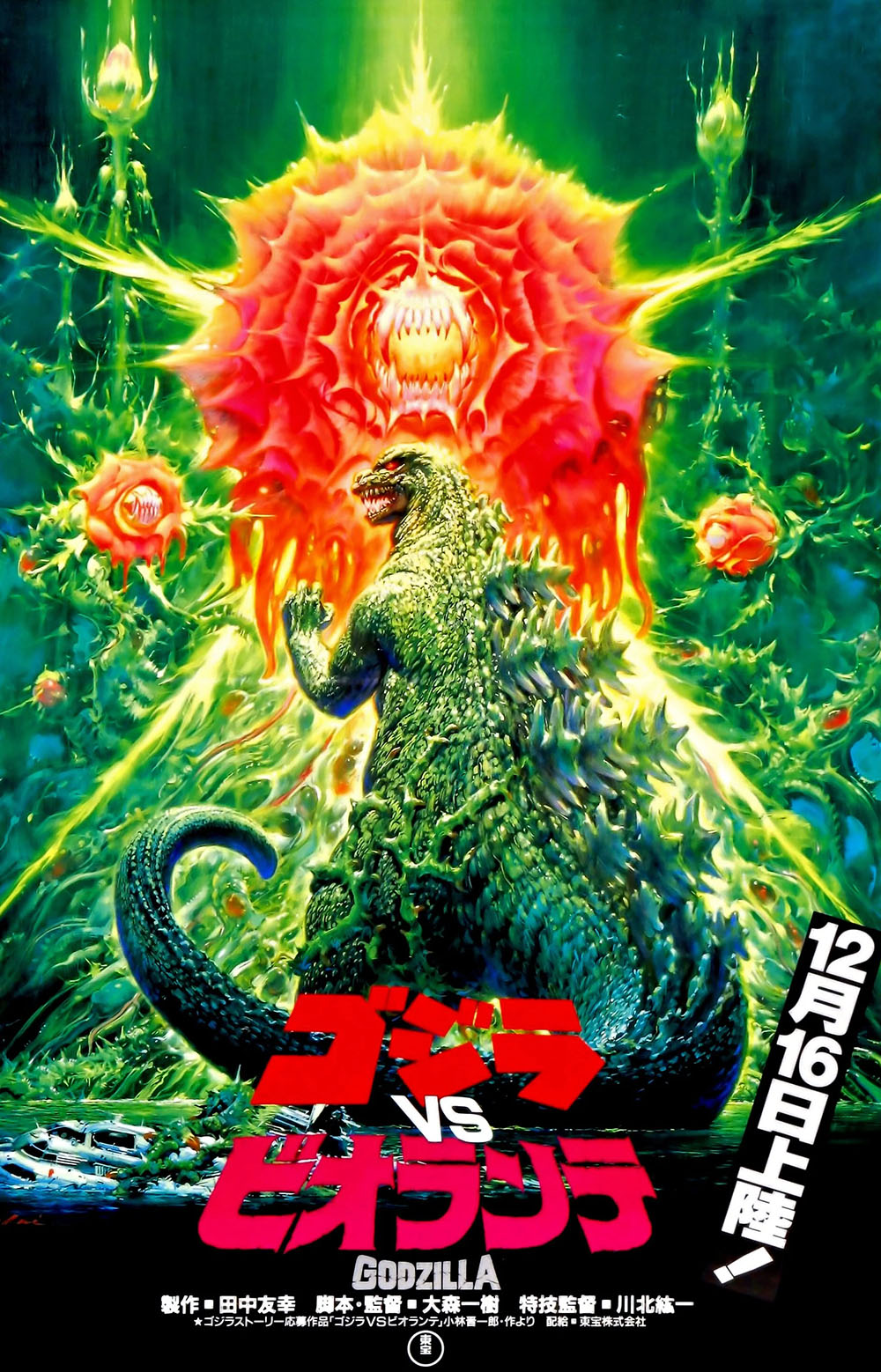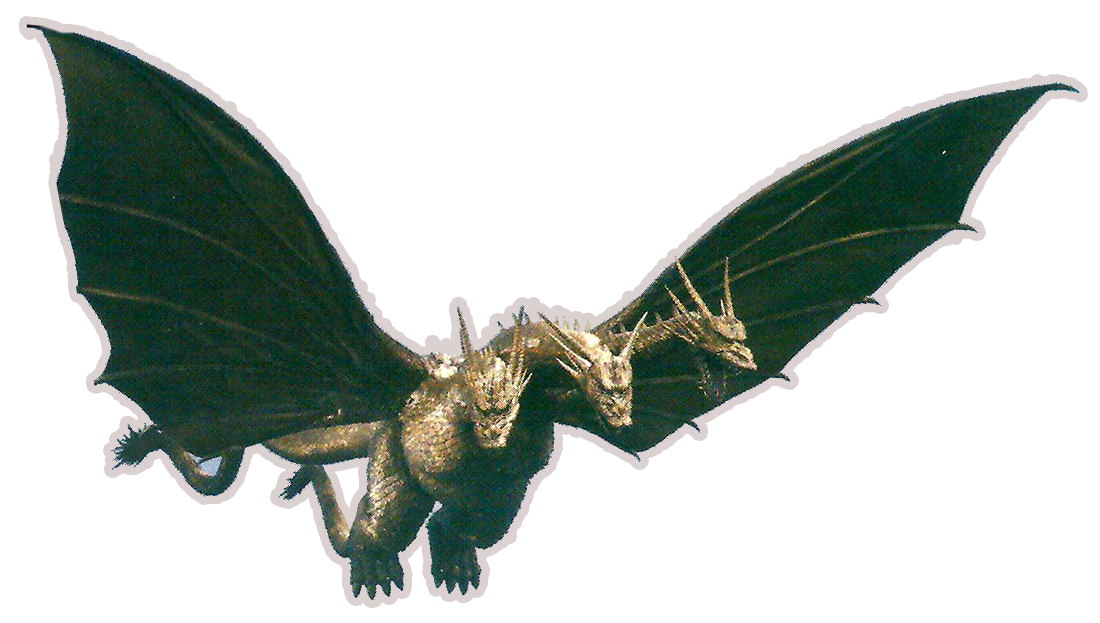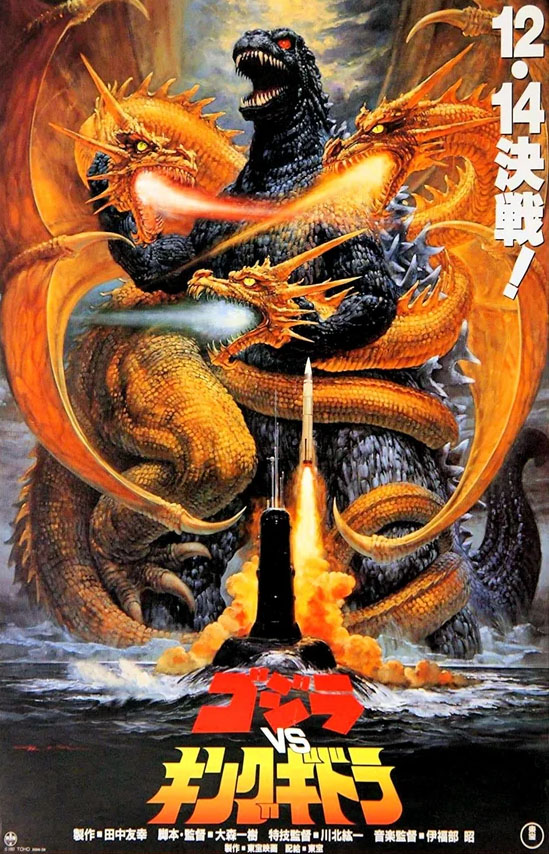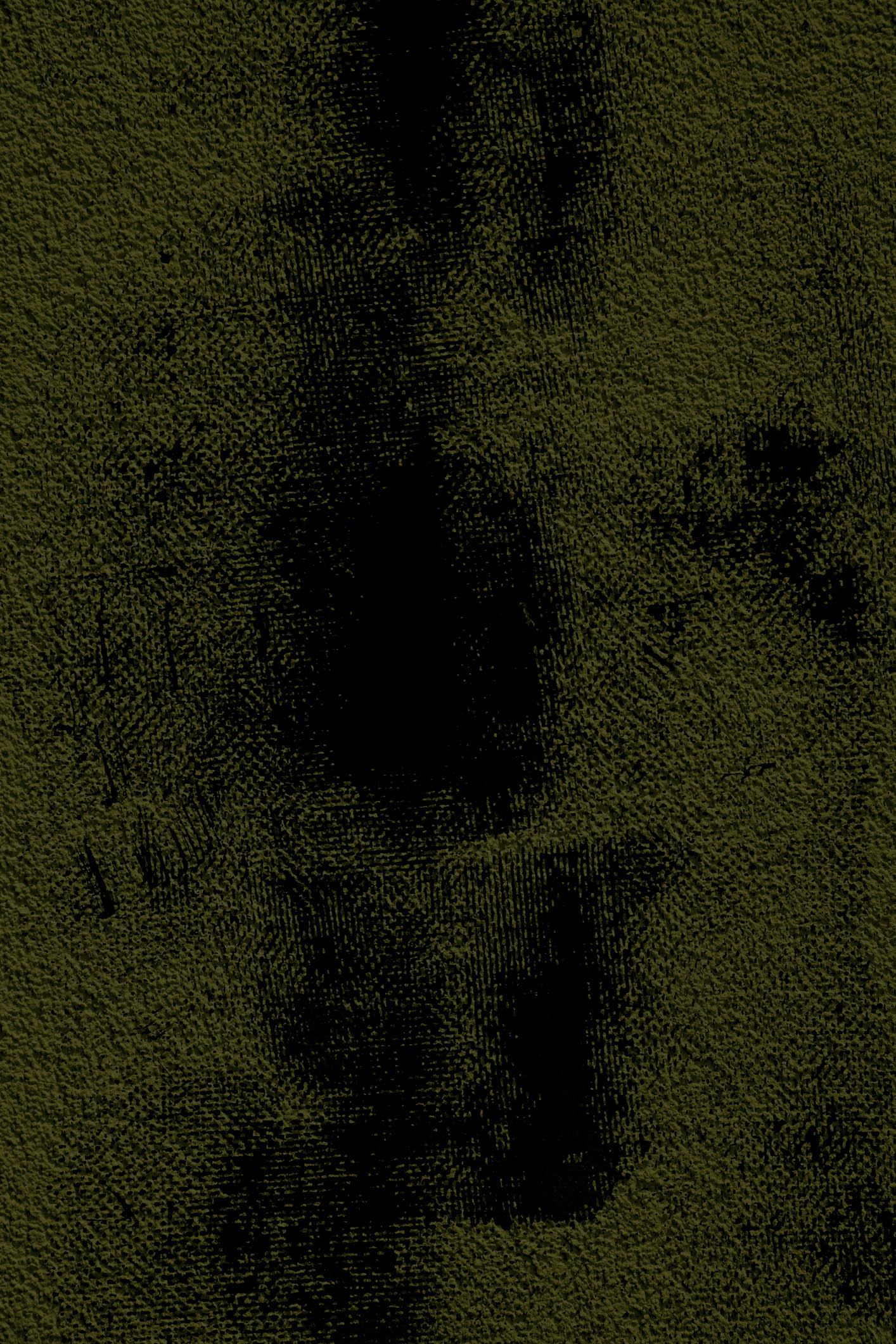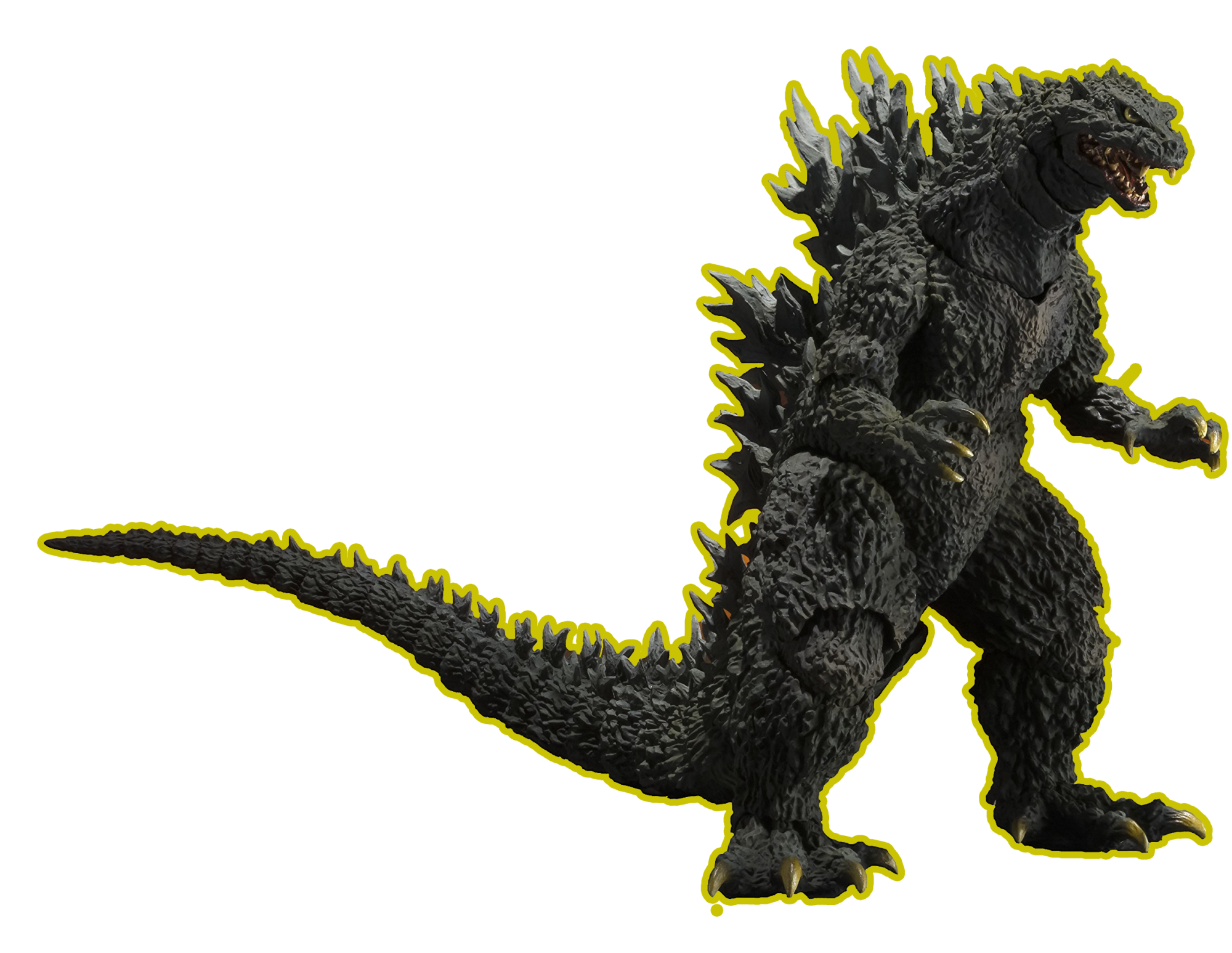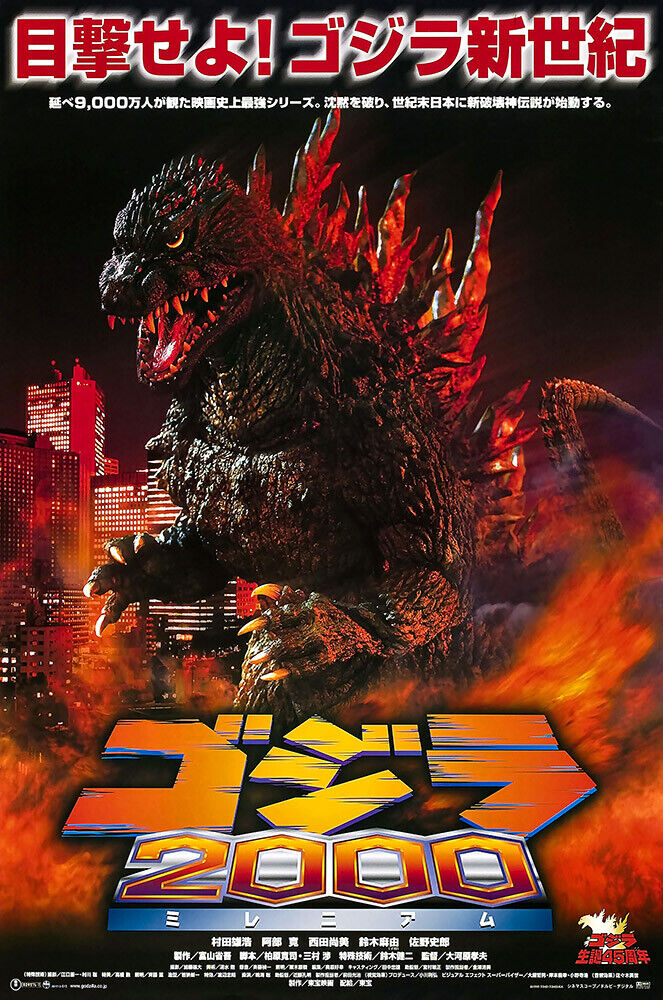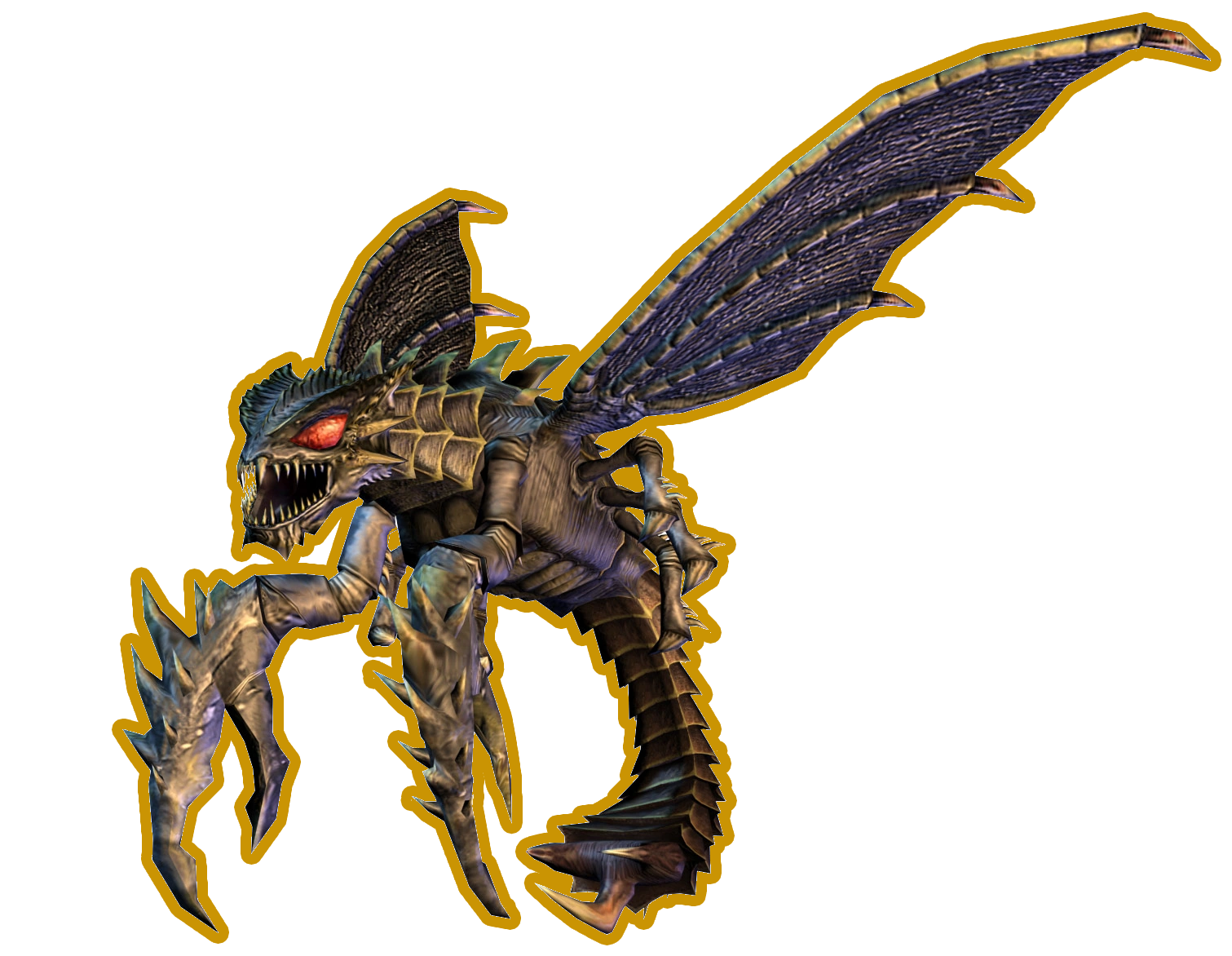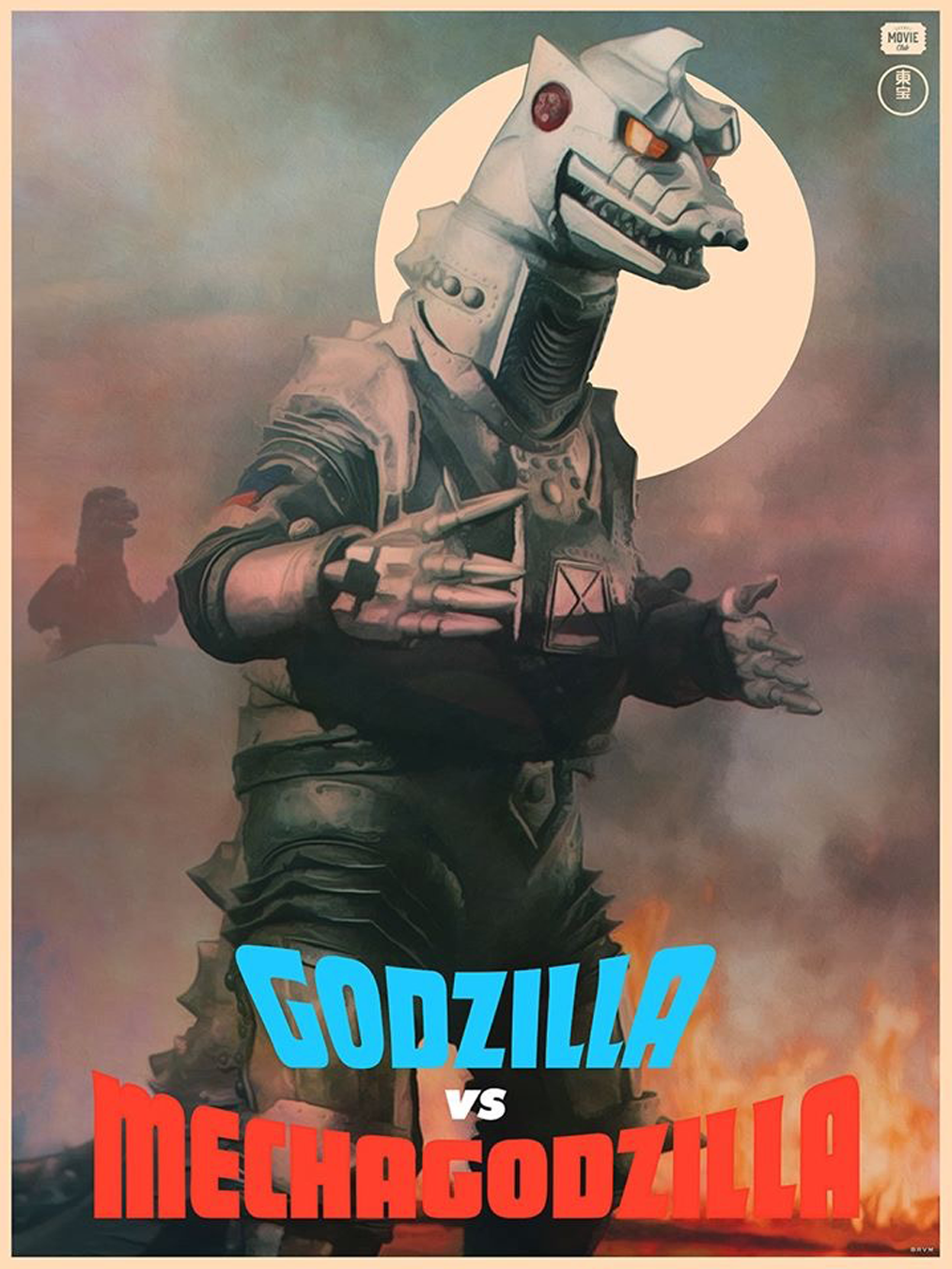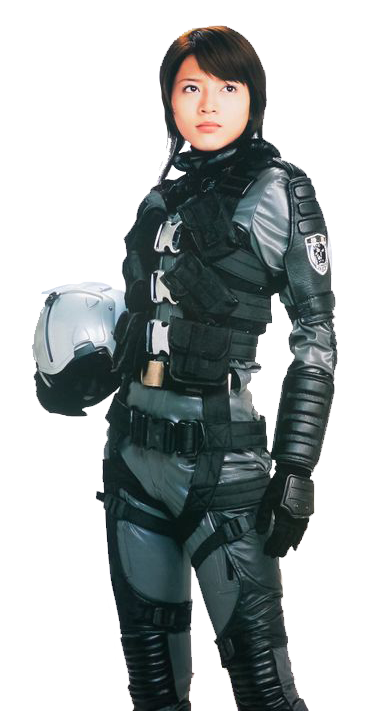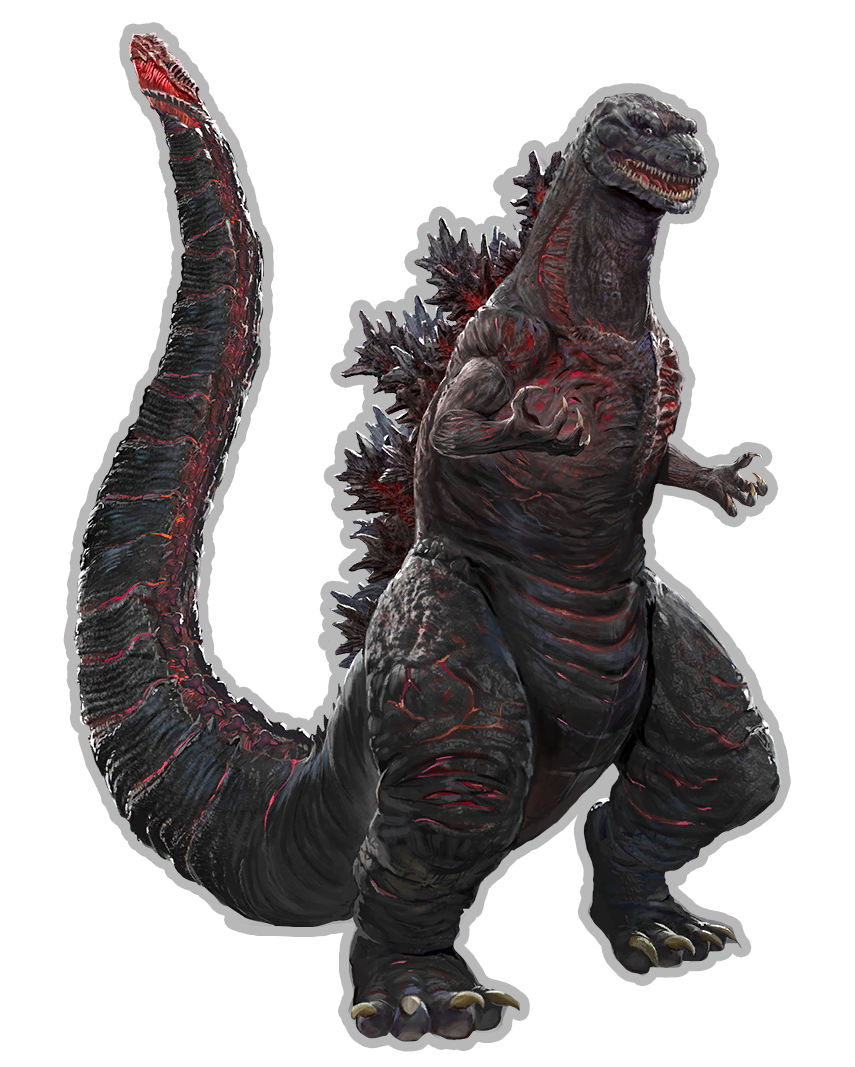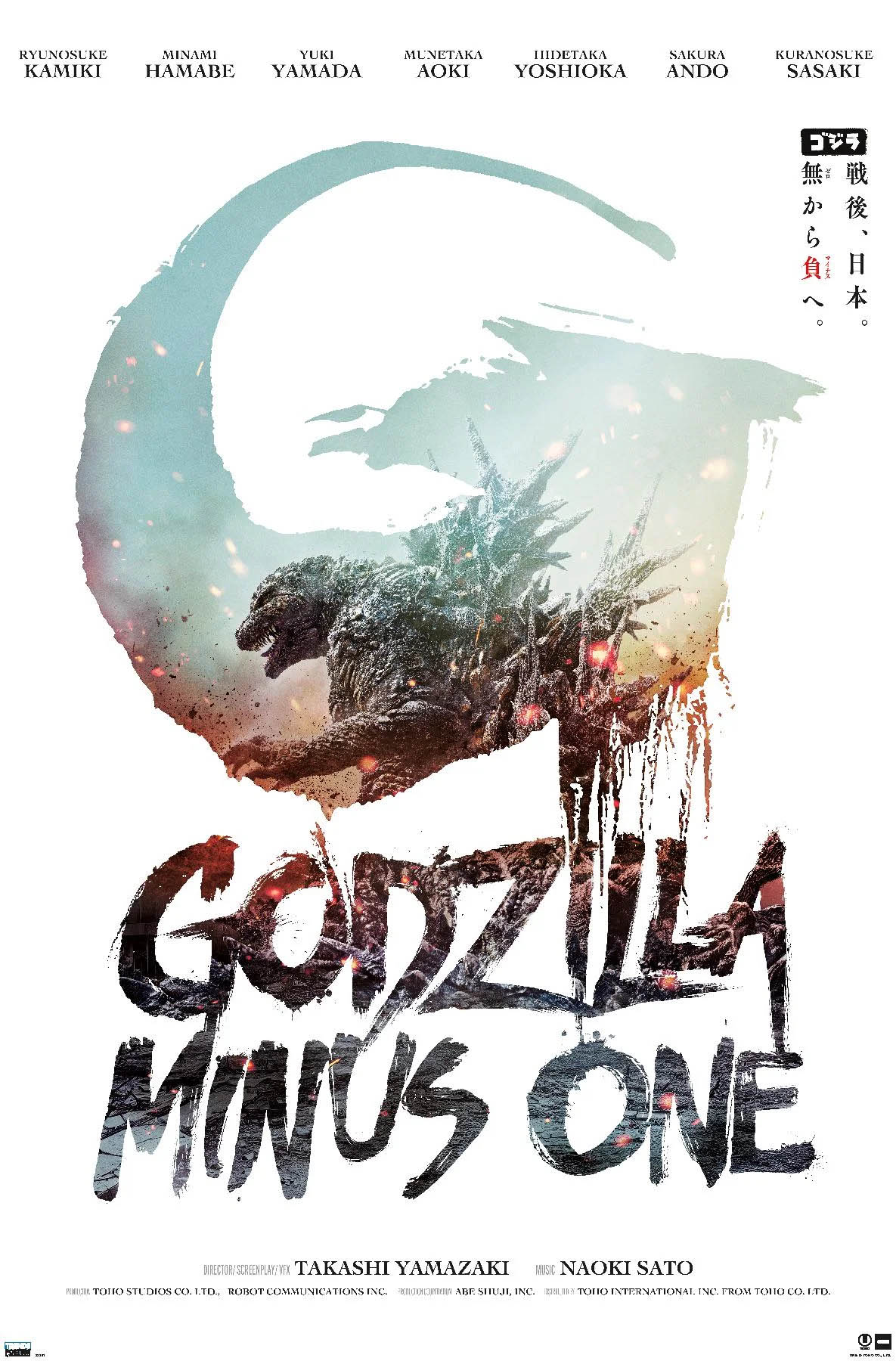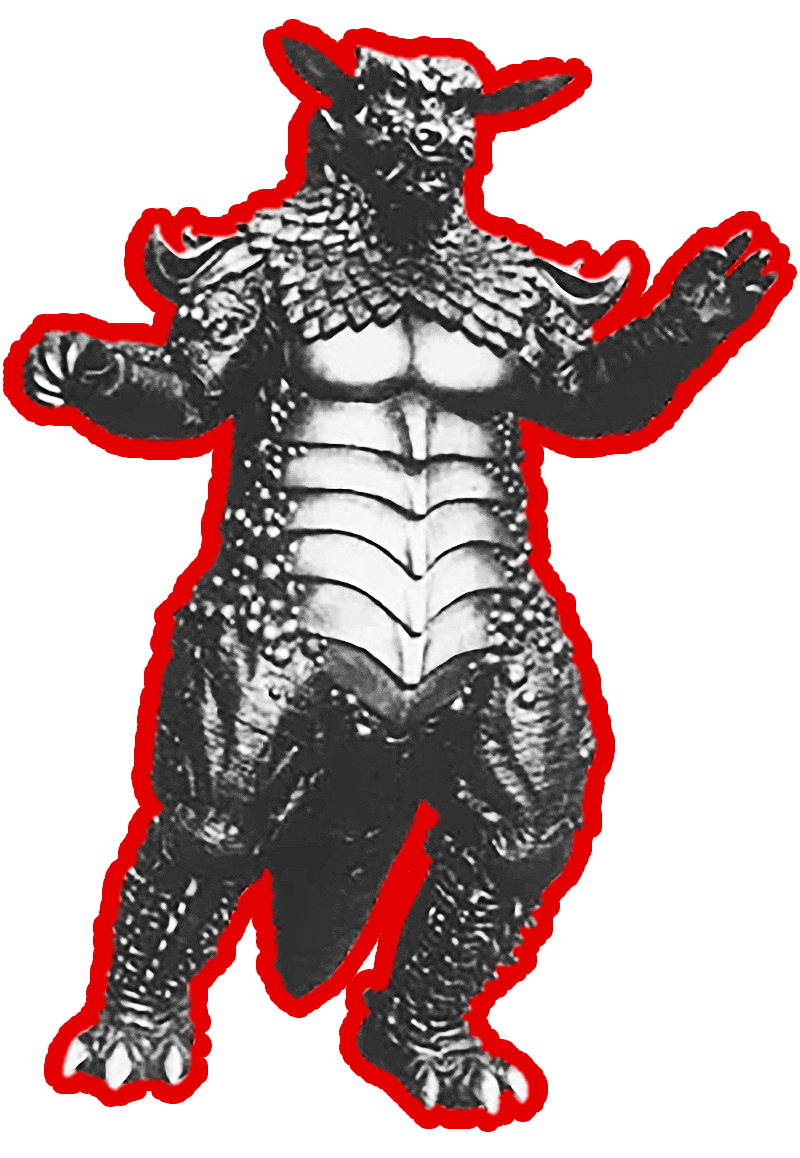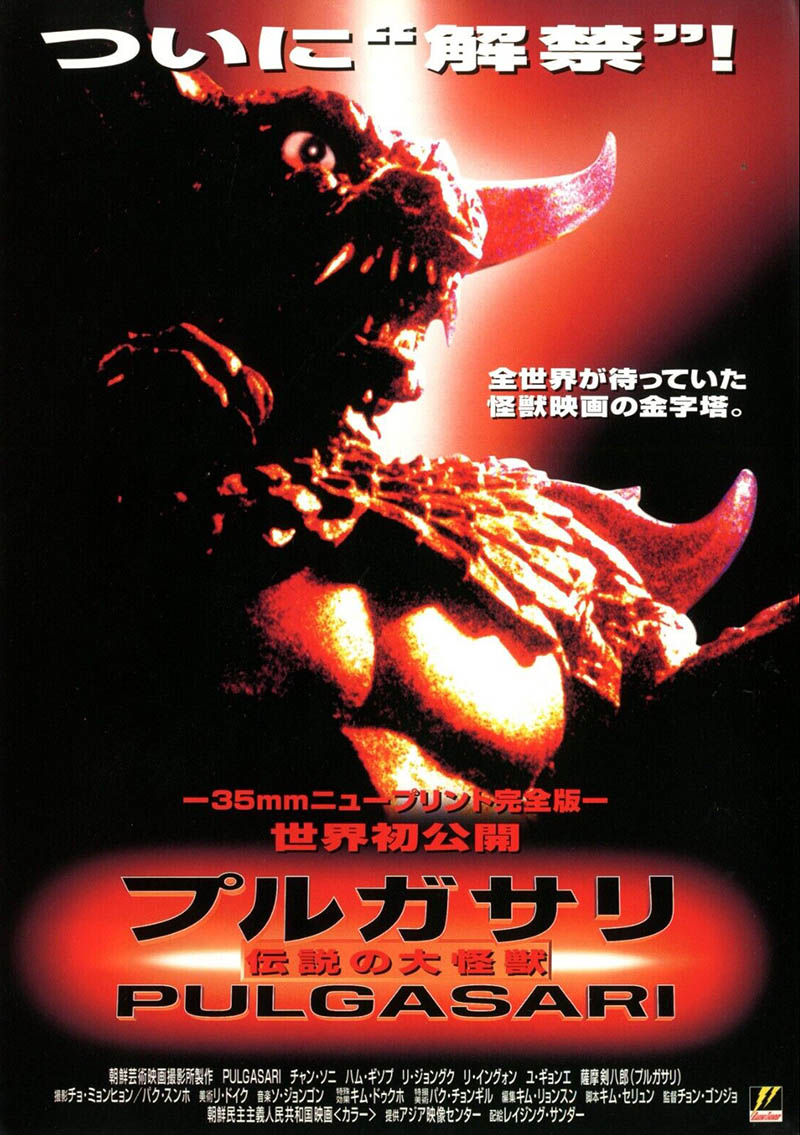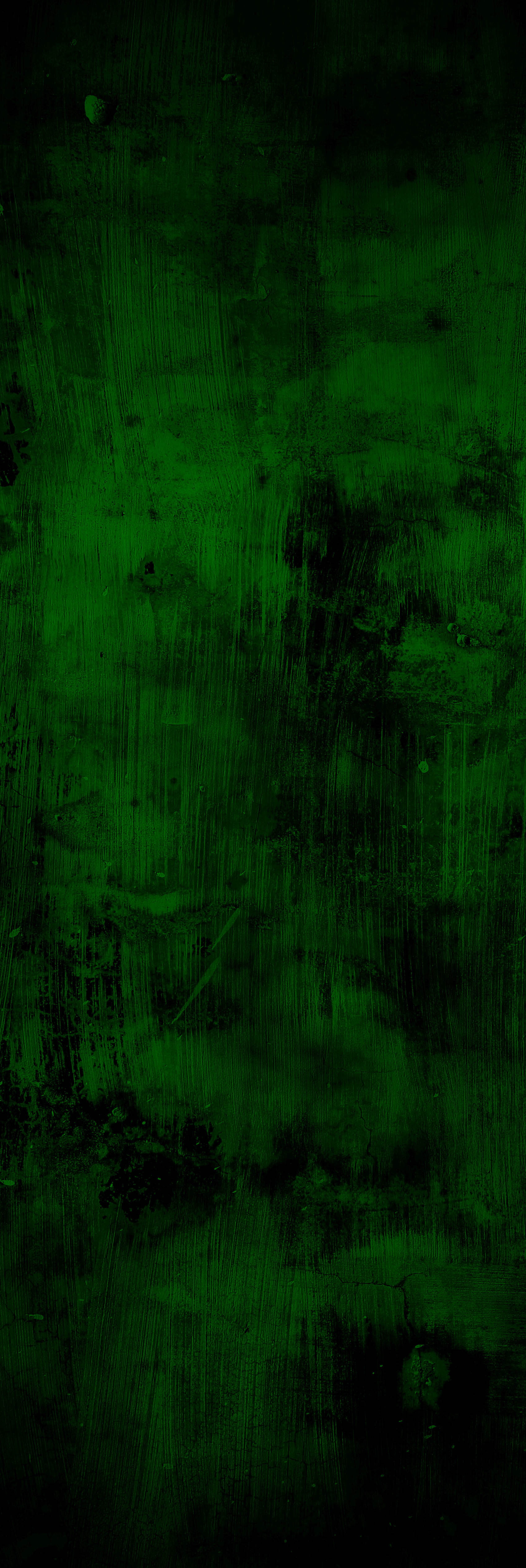
CELEBRATING 70 YEARS OF
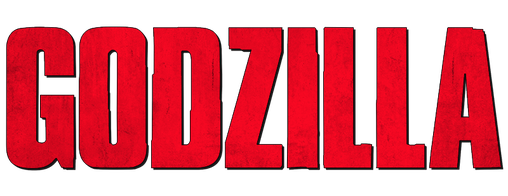
AND THE BIRTH OF KAIJU
Kaiju is a Japanese sub-genre of science fiction involving giant monsters, was created by Eiji Tsuburaya and Ishirō Honda. Kaiju or 'Strange Beast' also refers to the giant monsters themselves, which are usually depicted attacking major cities and battling either the military or other monsters. Kaiju culture was born out of Godzilla, the king of all monsters and undisputed champion of the genre.
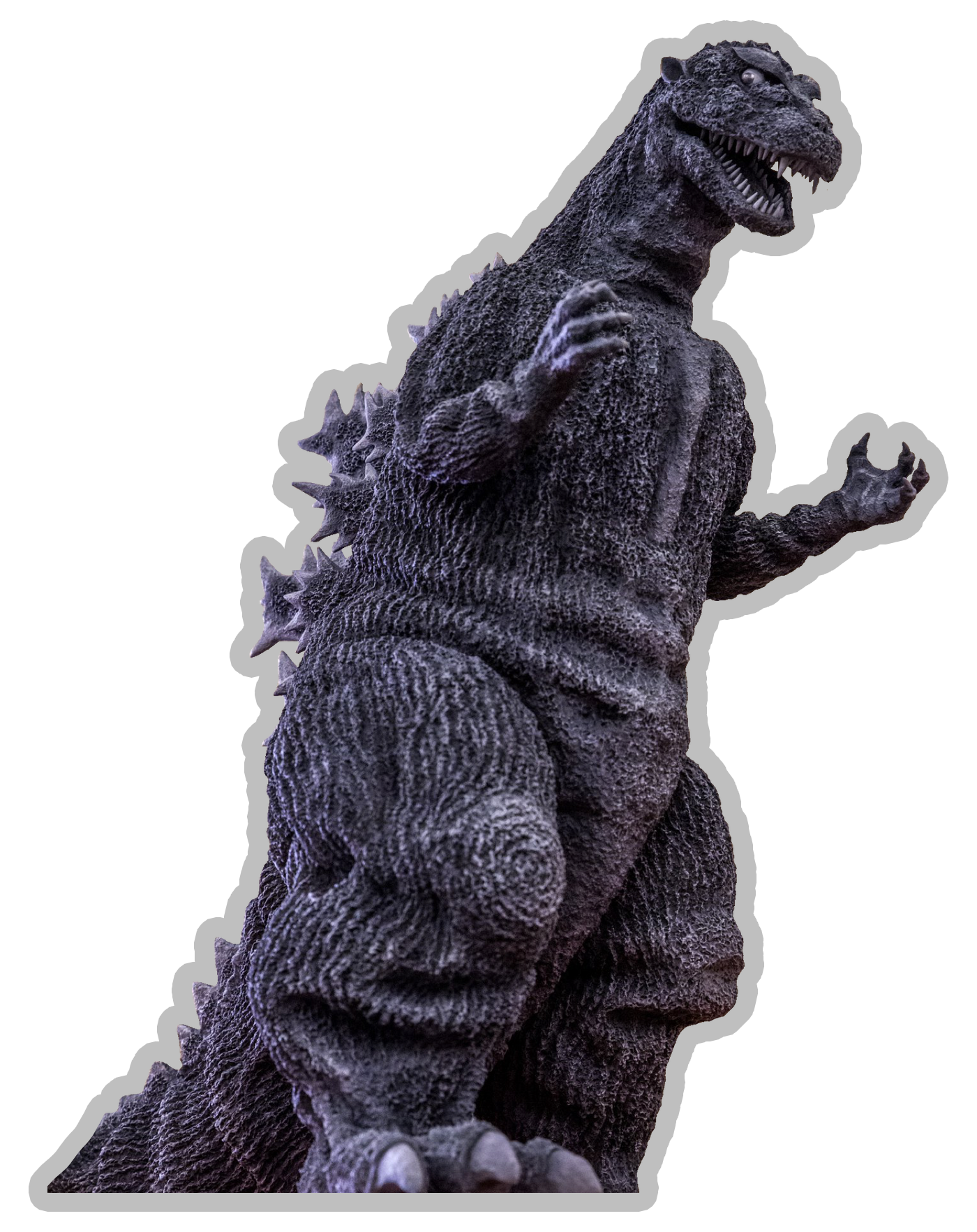
GODZILLA ERAS
The Godzilla film series is broken into four distinct eras reflecting the characteristic style and corresponding to the same eras used to classify all kaiju eiga (monster movies) in Japan. The first, second, and fourth eras refer to the Japanese emperor during production: the Shōwa era, the Heisei era, and the Reiwa era. The third is called the Millennium era, as the emperor (Heisei) is the same, but these films are considered to have a different style and storyline than the Heisei era.
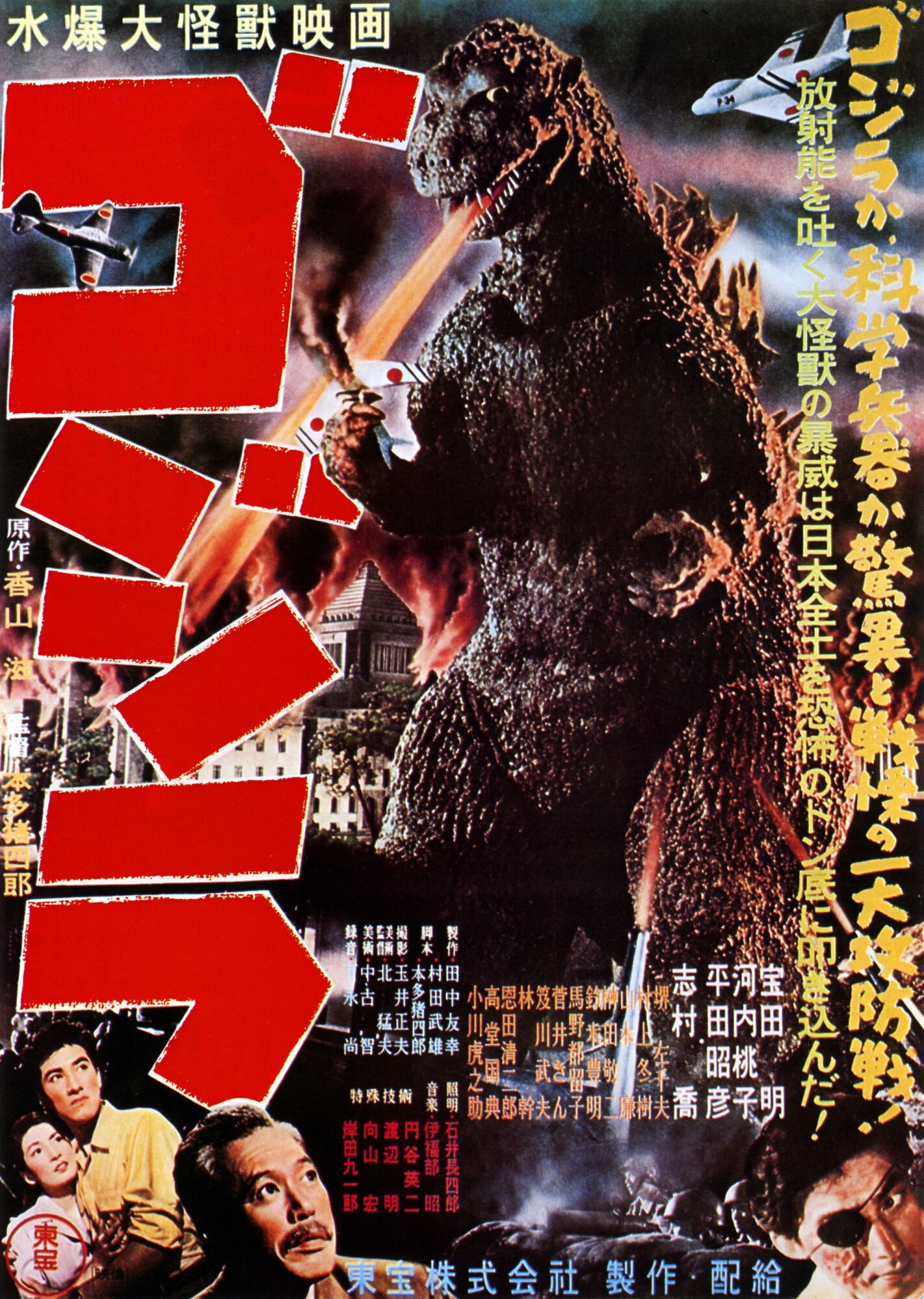
The original Godzilla ゴジラ kaiju film directed and co-written by Ishirō Honda, with special effects by Eiji Tsuburaya is released in 1954 starting the longest running film franchise in history and creating the Kaiju (monster) sub-genre. The film stars Akira Takarada, Momoko Kōchi, Akihiko Hirata, and Takashi Shimura, with Haruo Nakajima and Katsumi Tezuka as Godzilla. In the film, Japan's authorities deal with the sudden appearance of a giant monster, whose attacks trigger fears of nuclear holocaust in post-war Japan.
Mothra (モスラ) released 1961 Japanese kaiju film directed by Ishirō Honda, with special effects by Eiji Tsuburaya. It is the first film in the Mothra franchise. In the film, an expedition to an irradiated island brings civilization in contact with a primitive native culture. When one sensationalist entrepreneur abducts two doll-sized priestesses for exploitation, their ancient deity, known as Mothra, arises in retaliation.
After his first two cinematic rampages, Godzilla is revived as an adversary for the Hollywood import King Kong. When Kong is discovered on a remote island by a publicity-hungry pharmaceutical company, the giant ape is set on a collision course with Godzilla, and Japan braces for a double dose of devastation.
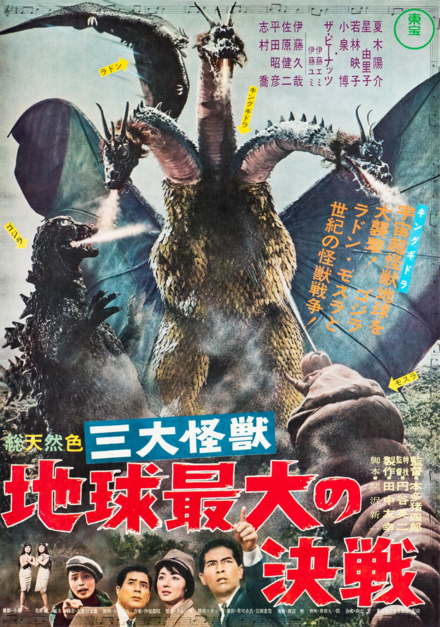
Ghidorah, the Three-Headed Monster
(三大怪獣 地球最大の決戦) was released in 1964 and directed by Ishirō Honda, with special effects by Eiji Tsuburaya. It is the fifth film in the Godzilla franchise, and was the second Godzilla film produced that year, after Mothra vs. Godzilla. In the film, an extraterrestrial from Venus, possessing the body of a princess, warns humanity of the pending destruction by the alien-dragon King Ghidorah, with Godzilla, Rodan, and Mothra being their last hope for survival.
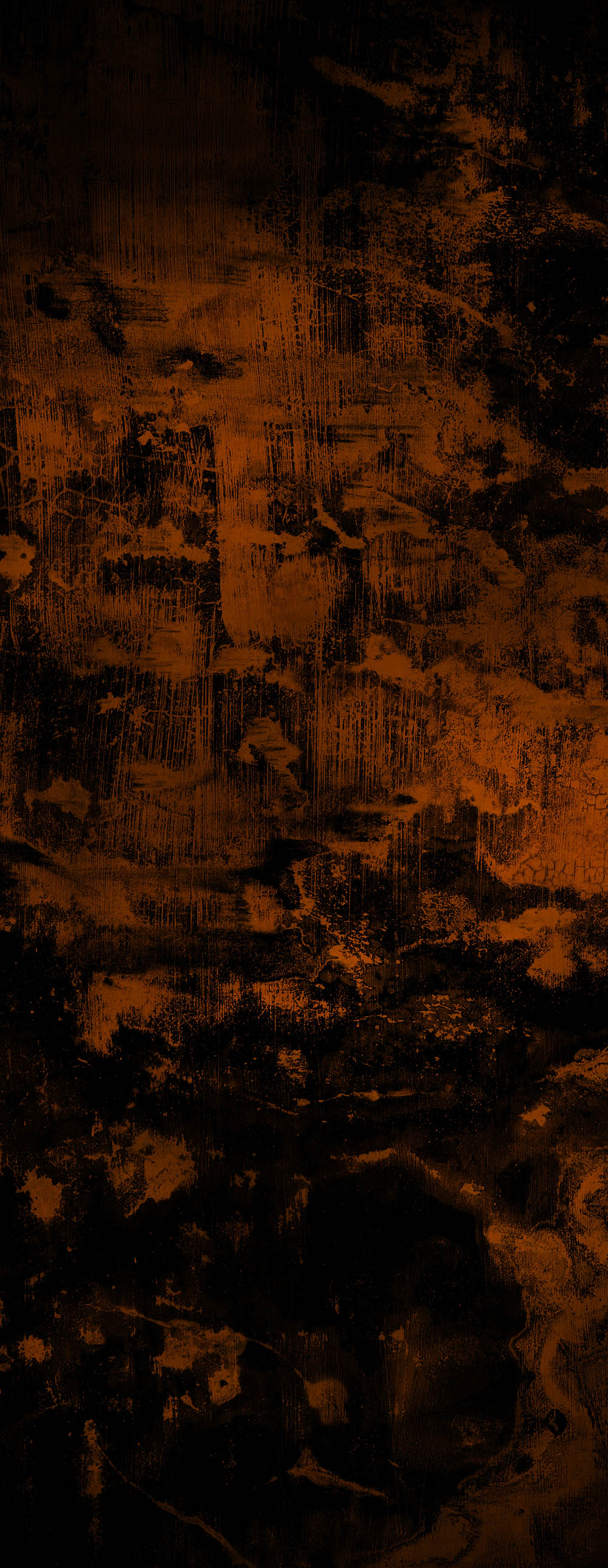
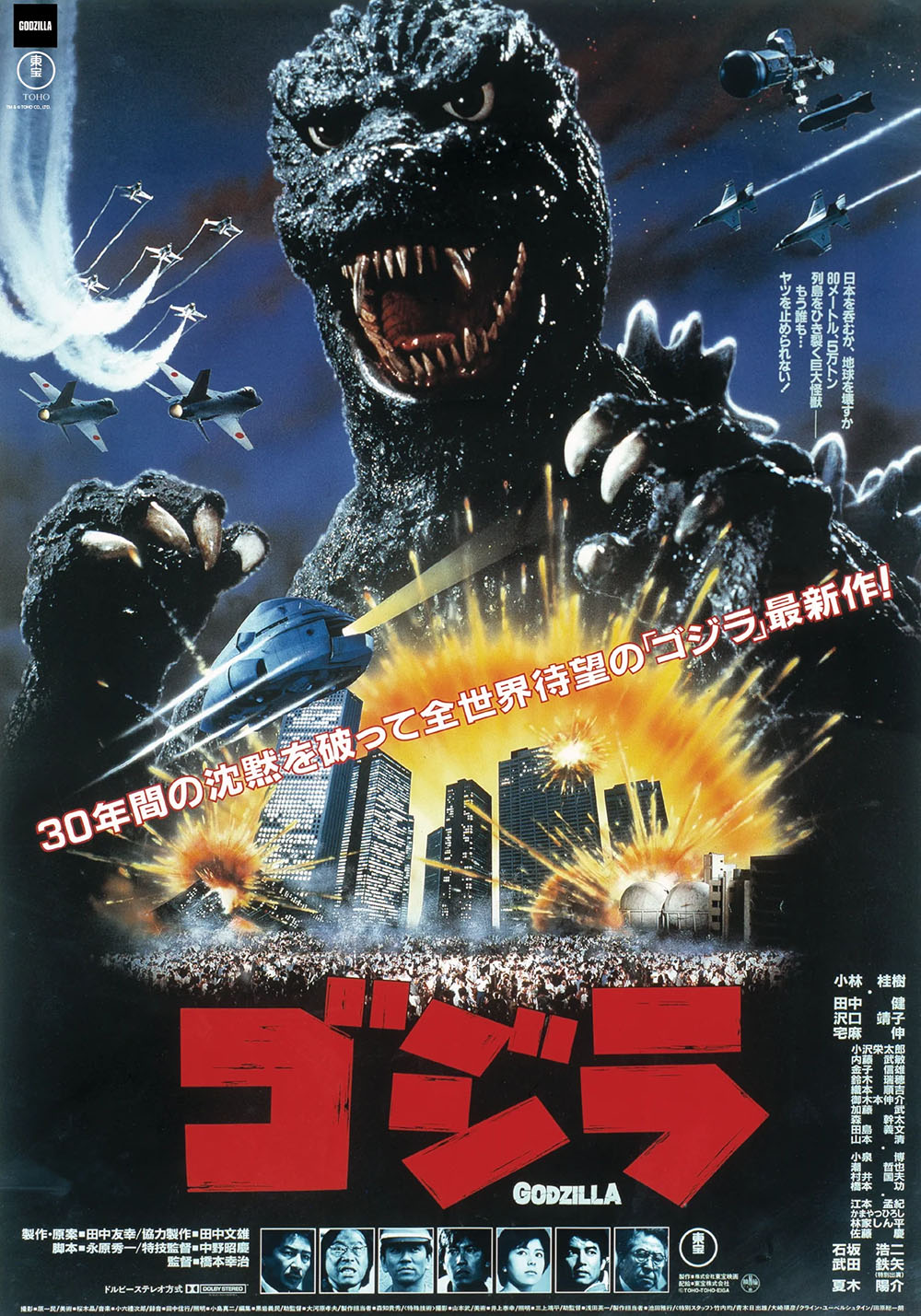
The Return of Godzilla (1984) stars Ken Tanaka, Yasuko Sawaguchi, Yosuke Natsuki, and Keiju Kobayashi, with Kenpachiro Satsuma as Godzilla. The film serves as both a sequel to the original 1954 film and a reboot of the franchise that ignores the events of every Shōwa era film aside from the original Godzilla, placing itself in line with the darker tone and themes of the original film and returning Godzilla to his destructive, antagonistic roots.
The film was released theatrically in Japan on December 15, 1984. Critics praised Godzilla's return, Koroku's score, themes, special effects and darker tone. The following year, a heavily-re-edited localized version, titled Godzilla 1985, was released in the United States by New World Pictures; it features new footage, with Raymond Burr reprising his role from Godzilla, King of the Monsters! (1956), itself an American localization of Godzilla (1954).
Godzilla vs. Biollante (ゴジラvsビオランテ) released in 1989 was directed and written by Kazuki Ōmori, with special effects by Kōichi Kawakita. Distributed by Toho and produced under their subsidiary Toho Pictures, it is the 17th film in the Godzilla franchise, the second film in the franchise's Heisei period, and a sequel to 1984's The Return of Godzilla.
In the film, corporations struggle for control over samples of Godzilla's cells, while the monster itself battles a creature born from a combination of Godzilla's cells, the cells of a plant, and the cells of a woman. The idea originated from a public story-writing contest, and set a trend common to all Heisei era movies, in which Godzilla faces off against opponents capable of metamorphosing into new, progressively more powerful forms.
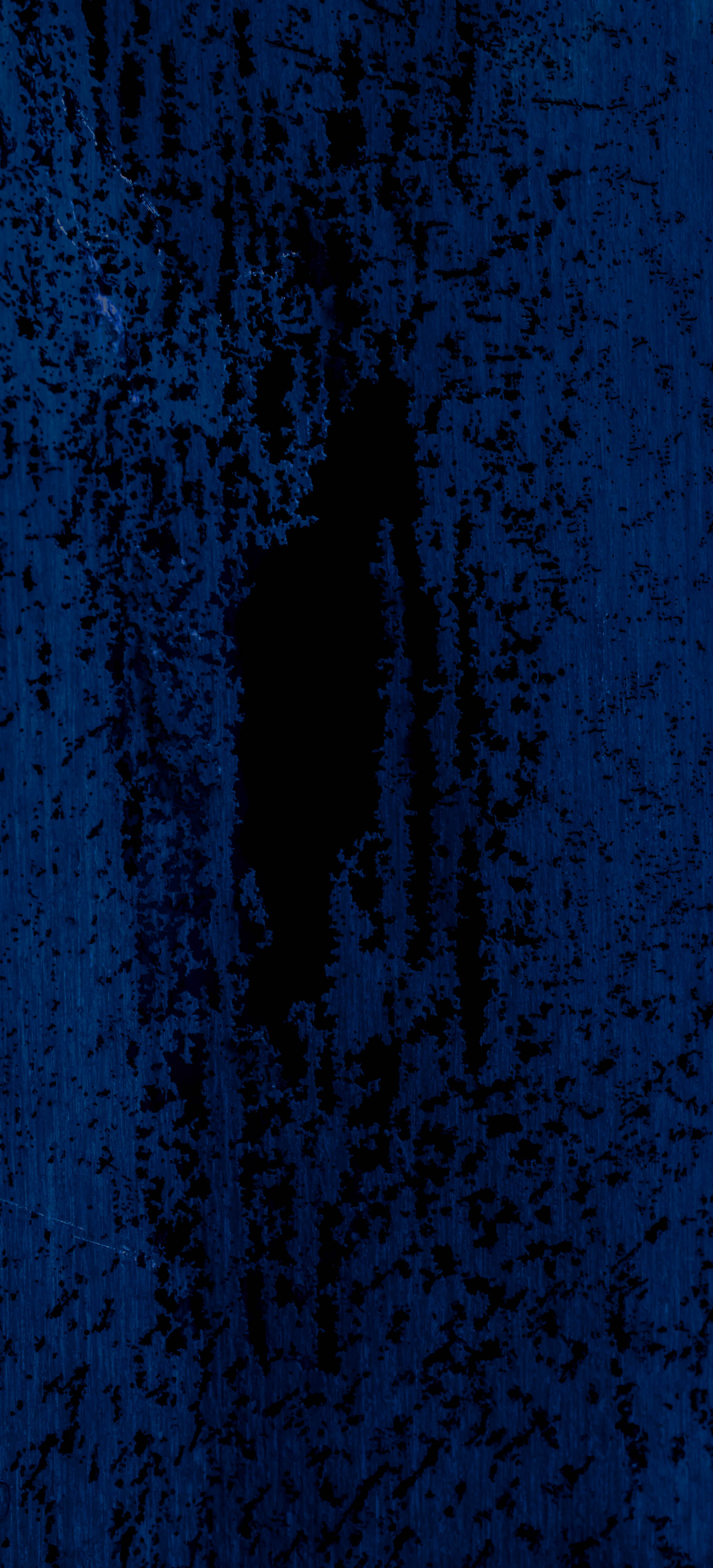
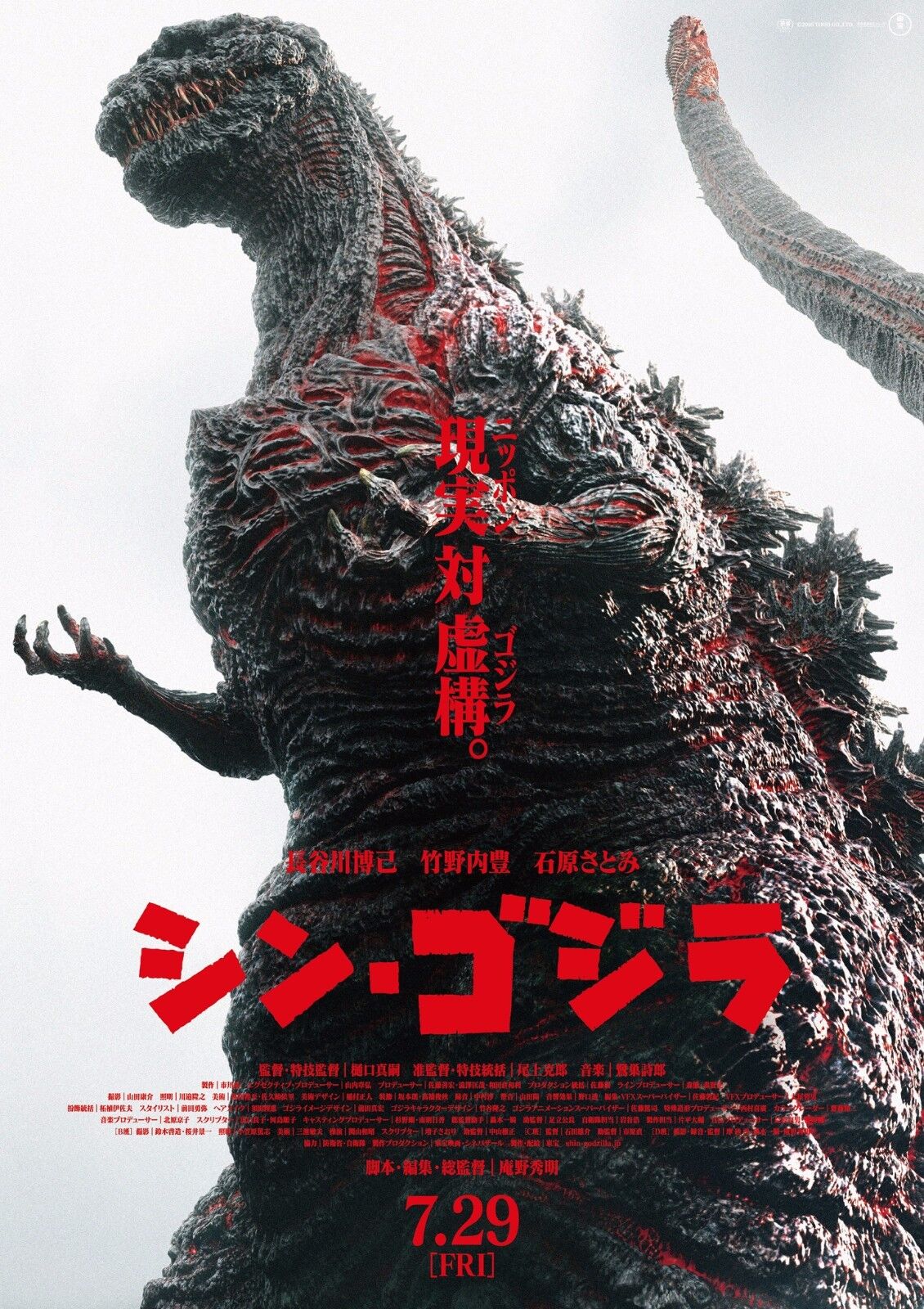
Shin Godzilla (シン・ゴジラ) released in 2016 was directed by Hideaki Anno and Shinji Higuchi, with visual effects by Higuchi and produced by Toho Pictures and Cine Bazar. It is the 31st film in the Godzilla franchise, the 29th film produced by Toho, Toho's third reboot of the franchise, and the first film in the franchise's Reiwa era. It is also the first reboot of a tokusatsu series to be adapted by Anno and Higuchi, followed by Shin Ultraman (2022) and Shin Kamen Rider (2023).
In the film, politicians struggle with bureaucratic red tape in order to deal with the sudden appearance of a giant monster, known as Godzilla, that evolves whenever it is attacked.
Godzilla Minus One (ゴジラ-1.0マイナスワン) Released in 2023, this latest film in the franchise was written and directed by Takashi Yamazaki who also created and directed visual effects. Godzilla Minus One was produced by Toho Studios and Robot Communications, and is the 37th film in the Godzilla franchise. Set in postwar Japan, the film stars Ryunosuke Kamiki as a former kamikaze pilot suffering from post-traumatic stress disorder after encountering a giant monster known as "Godzilla". The ensemble supporting cast includes Minami Hamabe, Yuki Yamada, Munetaka Aoki, Hidetaka Yoshioka, Sakura Ando, and Kuranosuke Sasaki.
